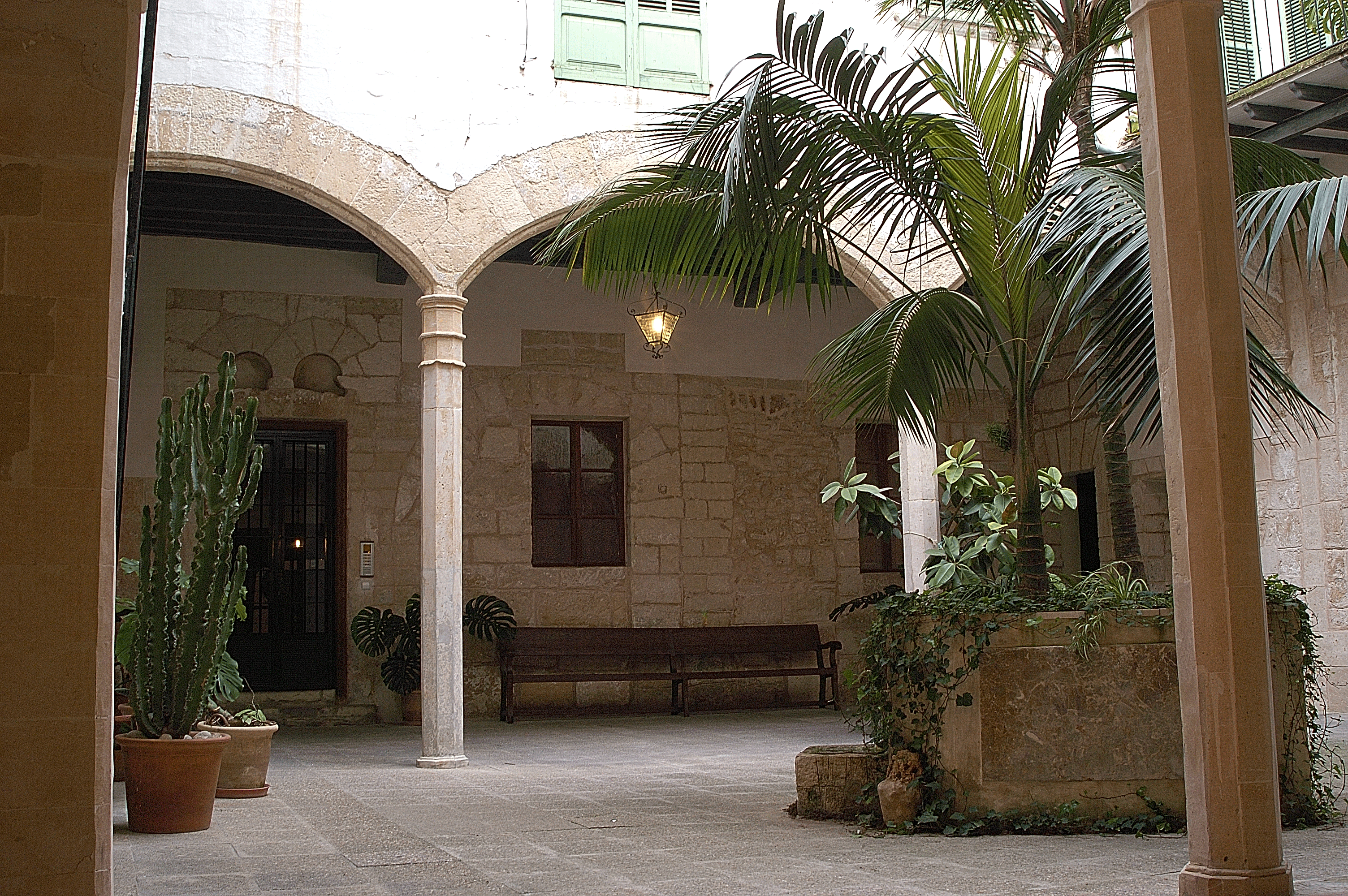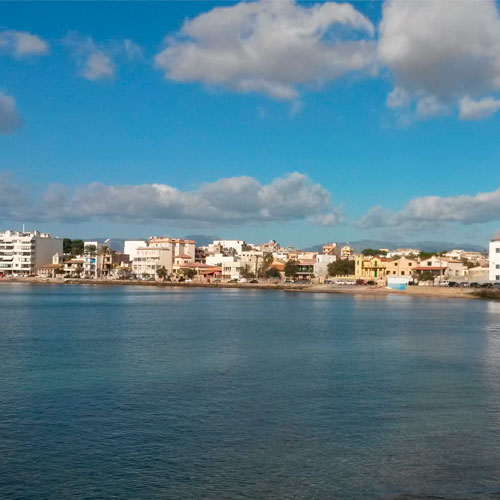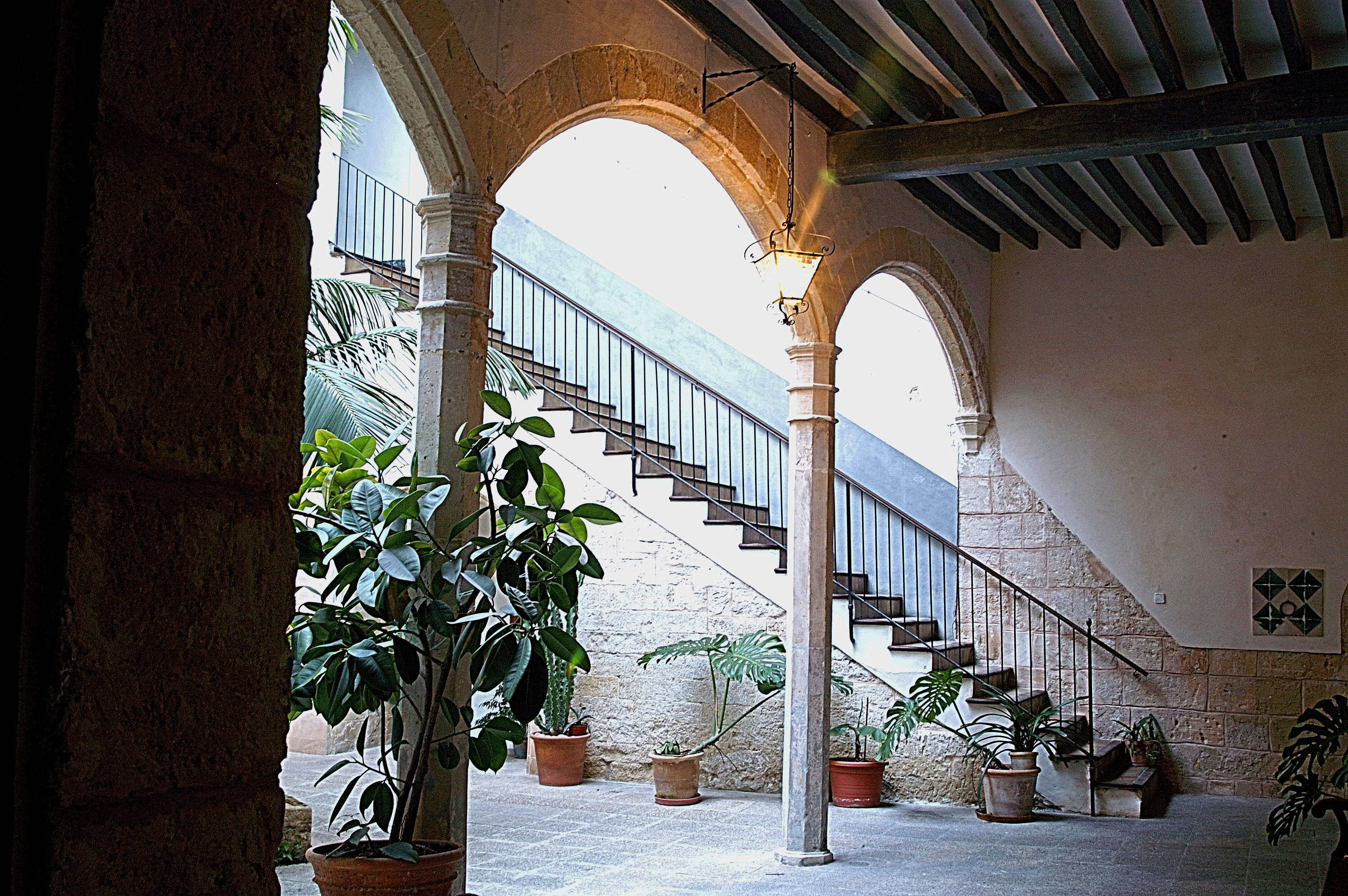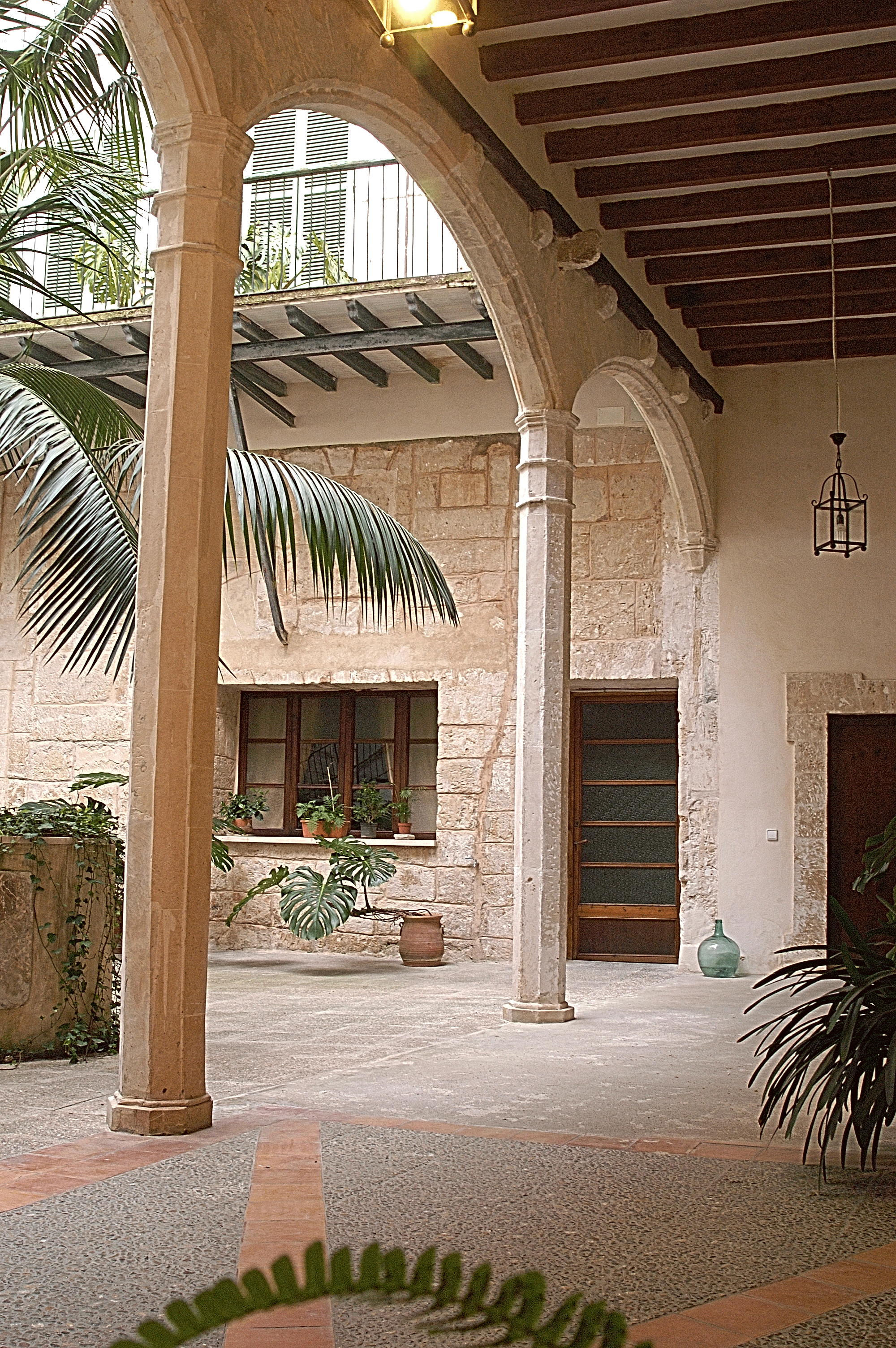La Criança - Tourism
La Criança

Description
The main doorway features a rounded arch with voussoirs that were added during a recent reform. Above the doorway is the coat of arms of Mallorca, which features a scroll bearing the inscription "Casa Pia de la Crianza".
The entrance or lobby has a beamed ceiling. To the right, a doorway leads to the chapel, which has a rectangular floor, with a lateral chapel near the presbytery. A slightly lowered, vaulted ceiling rises up above the cornice. Near the entrance, to the left, there is a reproduction of Sister Isabel Cifre's tomb, with the coat of arms of Mallorca at her feet as well as a headstone (the original tomb is located in Mallorca's Seu Cathedral). Further towards the centre, also to the left, an arched doorway links this room with the courtyard. In the wall on the right there is an interesting triangular niche that currently houses the image of Mare de Déu de Lluc (Mother of God of Lluc, a Black Madonna). The walls of the niche feature paintings representing Saint Domingo and Saint Catherine of Siena at the feet of the Cross and, to the right, Mare de Déu del Roser (Mother of God of the Rosary); to the left, a representation of Saint Christopher and several angels on the upper section. The altarpiece of the baroque oratorio features the Holy Jesus of Sister Isabel Cifre, which according to the legend sweated blood. The upper section features a painting of the Presentation of Mary (the school's patron saint), depicting the Virgin as a child ascending the 15 steps leading to the Temple of Jerusalem, where she was educated. To the left is a painting of Saint Joseph and to the right another depiction of Saint Ignatius of Loyola. The bench of the altarpiece also features numerous representations of saints: Saint Margaret, Saint Raymond of Penyafort, Saint Barbara, Saint Teresa, Saint Ignatius and Saint Francis Xavier standing before the Mother of God, the Tabernacle with the figures of Saint John the Baptist as a Child and Jesus as a Child, Saint Aloysius Gonzaga and Saint Cayetano standing before the Mother of God, Saint Ignatius, Saint Nicholas and Santa Gertrude and a martyr saint. To the left there is a side chapel with two baroque paintings: Our Lady of Sorrows and a Resurrection. There is also an interesting lamp dating back to 1741 and the coat of arms of the Verí, Gual, Olesa and Sanglada families. From here, a small doorway connects the sacristy, where we can see a canvas depicting Mary Immaculate.
From the main entrance a segmental arch leads to the courtyard where we find some Gothic details. On one side of the entrance (the south side) and on the opposite side of the entrance (north side) there are three segmental arches on each side that sustain the corresponding porch, supported by two octagonal pillars in the Gothic style and straight mouldings on each side. The porch interior has a ceiling supported by cantilevers. At the end of the north side, we find the remains of a mullioned window arch, featuring flower details on the capitals. Further to the right there is a rounded arch. On the right side of the courtyard is a balcony, while on the left side (west side), a staircase leads to the first floor. The first sloping segmental arch acts as the ceiling of the stairs. To its right there is a rounded arch which used to house a cistern neck. In the centre of the courtyard is a polygonal trough which contains various plants.
Holy Jesus of Sister Isabel Cifre
The legend tells the story of Sister Isabel Cifre. In her cell she venerated the image of the Passion. According to the story, his head and sores sweated blood. Until the 1960s, a festival was held in his honour on 3 May (GEM, XV, 282).
History
The "Casa de la Criança" school was founded in 1510 by canon Gregori Genovard, who donated several old houses located on the same street. The purpose of the institution was to train young women in the boarding school. The adoration of the Presentation of the Virgin Mary was given much importance. The following figures collaborated in the foundation of the school: Jaume d'Olesa, the writer Gabriel Mora, and professor Caldentey, who was the confessor of the house. Sister Isabel Cifre (1467-1542) was the first rector until her death in 1542. Initially, only the daughters of noblemen were admitted to the school. Later on, however, the school also admitted girls from other social classes. In the year 1521, the school had over 100 pupils. On the death of the school's founders, the school was managed by the University of the City and Kingdom of Mallorca. As of 1715, Palma City Council was the institution that each year appointed two councillors that were responsible for the management of the school. In the year 1872, an ordinance containing 68 articles was enacted which had the title "Ordinance for the regulation and interior government of Casa-Pía de la Crianza". The Archduke Lluís Salvador mentions in his writings that in the year 1880, the school was still under the protection of the City Council (Habsburgo-Lorena, L. S.: 165). In the year 1938 however, the institution was managed by the Missionary Congregation of Sagrats Cors and Sister Bàrbara Alomar became the new rector. Between the years 1955 and 1969, the building became the religious institution Casa Generalícia. The congregation acquired the property in the year 1980.
References:
-HABSBURG-LORENA, L. S.
La ciudad de Palma (The City of Palma). Palma: Ripoll-Ajuntament, 1981.
-ZAFORTEZA MUSOLES, D.
La ciudad de Mallorca. Ensayo histórico-toponímico (The City of Mallorca: A Historical and Toponymic Essay). Palma: Ajuntament, 1985-89. 5 vols.
-LLOMPART, G.: Los estatutos reformados del Colegio femenino de la Criança fundado por Elisabet Cifre (1467-1542) (The Revised Statutes of the Girls' School of La Criança founded by Elisabet Cifre (1467-1542)). Hispania Sacra, 28, 1975; p. 125-145.
-CASTELLS, Concepció (M SS CC)
Resumen histórico del antiguo Colegio de Ntra. Señora de la Crianza (Historical Overview of the Old College of Nuestra Señora de la Crianza).
Palma, 1988
-Gran Enciclopèdia de Mallorca (The Great Encyclopaedia of Mallorca).
Palma: Promomallorca, 1989-98. (Vol. IV, p. 210)
-Patis de Palma (Inner Courtyards of Palma): Ajuntament de Palma-Baltar & Associats, 2002, p. 49.
- Catàleg Ajuntament de Palma (Catalogue of the Town Hall of Palma), 2005.
Date last modified: March 13, 2023






















